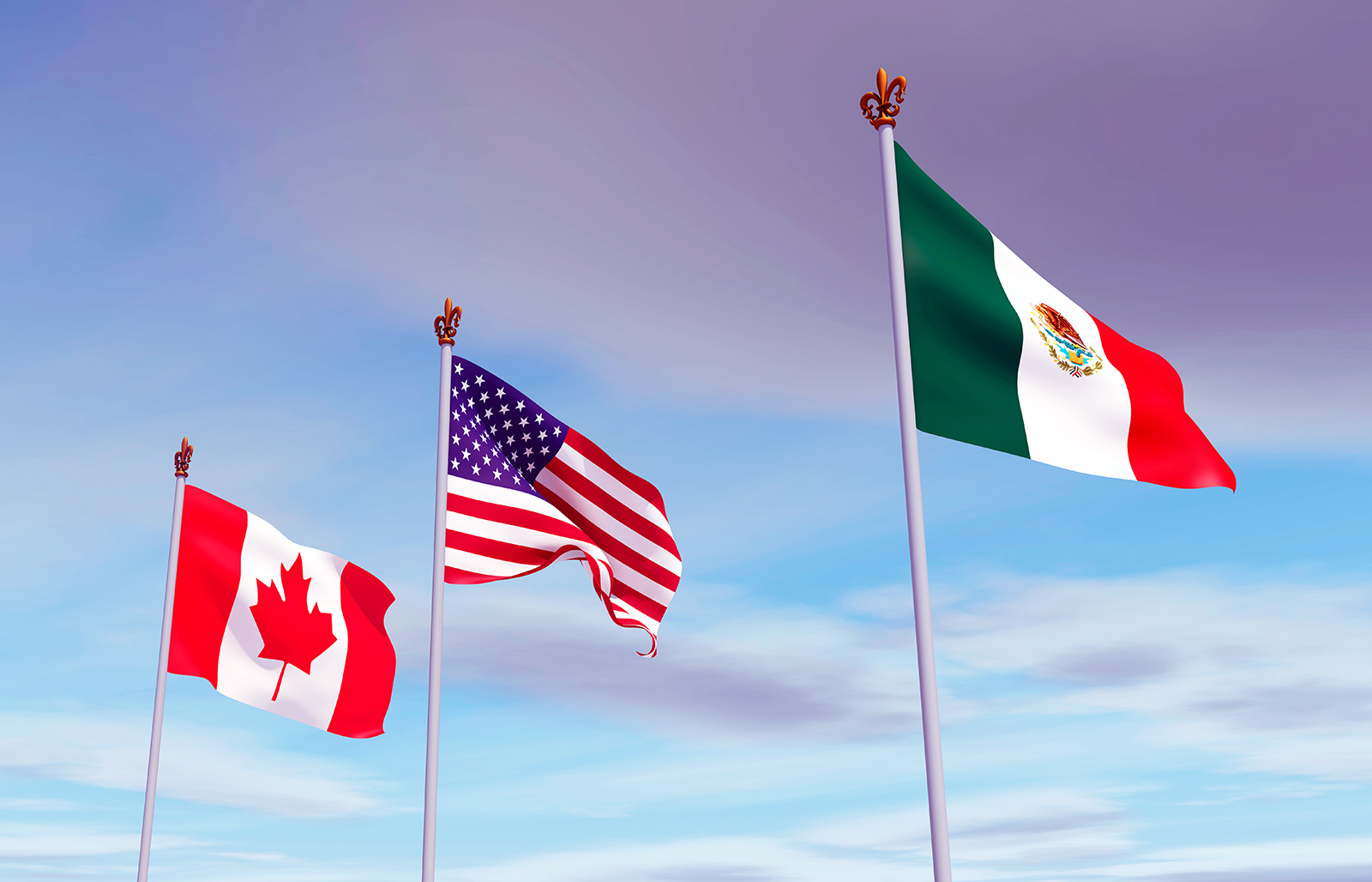What Does the New USMCA Look Like for Mexico?

Flags that represent Canada, the United States and Mexico. No trade agreement will ever be enough to address all the region’s challenges, but the USMCA sets a strong foundation to support a prosperous regional economy.
Photo: Shutterstock
This is the second of two pieces looking at the USMCA. The first one, on the view from Canada, was published on January 24th.
August 2017, trade negotiators from the United States, Mexico and Canada met for the first time in Mexico City to begin hashing out a new North American Free Trade Agreement.
Two and a half years and many negotiations later, the U.S.-Mexico-Canada Agreement (USMCA) has finally passed both chambers of the United States’ Congress. The agreement — which overhauls North America’s trade relations — is now poised to become U.S. law and the region’s governing economic framework, as Mexico’s Congress has already passed the deal and Canada’s Parliament is expected to follow suit in late January.
While the political negotiations are wrapping up, the next and final step will be the agreement’s implementation across North America.
In the coming months and years, these new rules will shape the region’s trade realities. Some rules may unleash investment, trade and better labor conditions, but they likely won’t be without additional hurdles. In Mexico, the agreement will touch most parts of the country’s $1.15 trillion economy, but it will be felt most immediately and strongly in the overall investment climate, the automotive manufacturing sector and in labor conditions.
Provides Predictability
While less tangible, the agreement’s biggest shift will take place at the macroeconomic level, as the USMCA solidifies trade rules and provides greater certainty for North American businesses operating across the continent. Ever since the USMCA’s negotiations began, the economic climate has been wracked by uncertainty, especially when specific issues threatened to derail the agreement or every time that the U.S. administration threatened to pull out of NAFTA without any viable alternative.
With the USMCA in place, Mexico has a stronger investment framework and more transparency, clarity and protections for businesses operating in the country.
However, USMCA alone cannot overcome all the hurdles to boosting investment in Mexico. Within Mexico, President Andrés Manuel López Obrador’s administration has adopted a pragmatic course, but also spooked investors with some of their changes. For example, in the country’s energy sector, the administration has halted planned energy auctions and renegotiated natural gas pipeline contracts, leaving investors wary of the sector’s shifting rules.
Meanwhile, the U.S. administration has repeatedly made trade issues its preferred bludgeon for gaining concessions on other issues. While the USMCA will blunt some of these impulses, it may not be enough to constrain them all.
Changing Auto Industry
Important changes will also likely occur in North America’s automotive sector. The USMCA now requires that 75% of a vehicle’s content be created within North America, up from around 60% under NAFTA. It also now mandates that 70% of vehicles’ aluminum or steel come from the three countries and that 40% to 45% of auto content be made by workers who earned at least $16 an hour — both provisions that were not included in the original NAFTA.
Yet, there is little clarity on the potential effects.
No trade agreement will ever be enough to address all the region’s challenges, but the USMCA sets a strong foundation to support a prosperous regional economy.
In fact, industry modeling predicts three possible outcomes: an expansion of North America’s automotive industry, a neutral status quo and a decline in automotive production. However, given the size of Mexico’s automotive industry — with combined auto and auto parts markets of around $150 billion — any changes will cause significant ripples across the country’s economy.
Strong Labor Rights
The final, and perhaps most transformative, issue will be Mexico’s labor conditions. The USMCA requires that its member countries not only enforce their own labor laws but also follow international standards. To achieve these changes, Mexico passed labor reforms on May 1, 2019, giving workers more rights and unions more power to organize. These changes could be a long-term success for Mexico’s labor movements, but the devil will be in the implementation.
Although Mexico has outlined a plan with annual benchmarks over the next four years, it will be a serious lift to get the new system up and running and ensure compliance.
There will also be adjustments as Mexican companies adjust their internal structures to the new labor provisions and relations with labor unions. These changes will give Mexican labor unions more negotiating power, and they could also cause increased friction and labor disputes.
For example, as of mid-January 2020, Home Depot workers in Mexico began striking to demand better conditions, salary and benefits. While the labor union representing the company’s workers has previously backed other strikes, it specifically cited Mexico’s new labor reform bill and the USMCA’s labor provisions as supporting their demands.
After more than two years, USMCA’s passage confirms the region’s economic integration and a continuation of the seamless movement of goods across the continent. However, the full effects will only become evident as the USMCA goes into effect and companies begin to implement its provisions.
No trade agreement will ever be enough to address all the region’s challenges, but the USMCA sets a strong foundation to support a prosperous regional economy.








